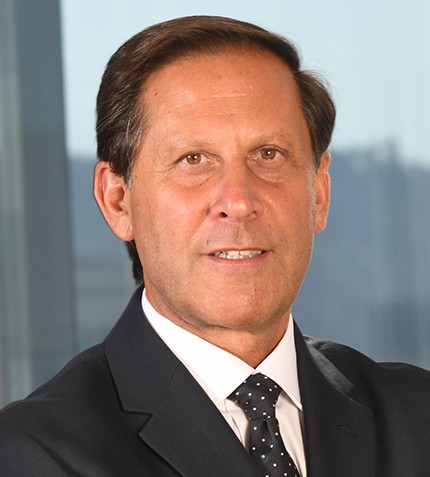Interview: Antofagasta CEO Iván Arriagada on the company’s digital transformation roadmap

Arriagada: In operational terms, the group’s copper production for 2021 was 721,500 tonnes at a net cash cost of $1.20/lb. These achievements translated into excellent financial performance, underlining our reputation as a reliable and responsible copper producer, with the operational and financial strength and balance sheet to deliver on our promises.
Looking ahead to 2022, we have guided copper production of 660-690,000 tonnes at a net cash cost of $1.55/lb, which takes into account declining grades at Centinela Concentrates and the expected impact of drought this year at Los Pelambres.
GBR: The Phase 1 expansion of Los Pelambres is due to be completed in 2022. What will it mean for the company?
Arriagada: As mining progresses at Los Pelambres, ore hardness will increase. The Phase 1 expansion is designed to compensate for this, increasing plant throughput from the current capacity of 175,000 tonnes of ore per day to an average of 190,000 tonnes of ore per day. Importantly, annual copper production will increase by an average of 60,000 tonnes per year over 15 years, starting at approximately 40,000 tonnes per year for the first four to five years and rising to 70,000 tonnes for the rest of the period as the hardness of the ore increases and the benefit of higher milling capacity is fully realised.
As such, the expansion will be transformational, helping us optimise throughput within the limits of the existing operating, environmental and water extraction permits, as well as creating up to 2,000 new jobs during construction. We will also seek to support local employment by prioritising local suppliers and, in the case of large suppliers from outside the regions where we operate, encouraging them to recruit locally.
GBR: Can you provide details of Antofagasta’s digital transformation roadmap, including the autonomous systems implementation project to operate Minera Centinela’s Esperanza Sur Pit?
Arriagada: We have made important progress on our Roadmap for Innovation, which remains a key focus for the company. We are installing an integrated remote operations management centre for Centinela in the city of Antofagasta which will transform ways of working for our colleagues, by cutting travel time to and from the mine, as well as encouraging access into mining for more people, including women and the differently abled. We also believe the centre will promote safer working and a better work-life balance which, in turn, can benefit colleagues’ mental health.
We have also developed a proprietary chloride leaching process for primary sulphides – Cuprochlor-T. This technology will allow us, over time, to produce copper cathodes from low grade primary sulphide minerals at reduced operating and capital costs, and with a smaller water and carbon footprint.
GBR: How does the company intend to utilize desalinated water through its INCO project?
Arriagada: One of the clear impacts of climate change is the 12-year drought in central Chile, including in the Choapa Valley where our Los Pelambres operation is located.
Several years ago, we took the decision to build a seawater desalination plant for Los Pelambres and the first stage of this project, with an output of 400 litres per second, is due to start operation in the second half of 2022. We are planning to double its capacity as soon as the necessary permitting is obtained, and we expect the plant will be operating at its expanded capacity in 2025. Desalinated and reused or recycled water will then account for more than 90% of the mine’s total production, freeing up some 500 l/s of water for surrounding communities. These efforts will help us progress towards our company-wide target for raw or desalinated seawater and reused or recycled water to supply 90% of the operational water use at all our mining operations by 2025.
GBR: Antofagasta intends to move to 100% renewable power. What steps must be taken to make this a reality?
Arriagada: Part of our climate change commitments includes the transition to renewable power and by the end of 2022, all our electricity consumption will be renewably generated. In July 2020, Zaldívar became our first operation to use 100% renewable energy, reducing our CO2 emissions by 67,614 tonnes at the time. In January 2022, Antucoya and Centinela also switched to 100% renewably-generated electricity and, later this year, they will be followed by Los Pelambres.
As part of this process, we have been renegotiating our power purchase agreements (PPAs), switching them from conventional sources – principally coal – to renewables. We are also focusing more on energy efficiencies to reduce both greenhouse gas emissions and operating costs. For example, Los Pelambres successfully piloted “start-stop” systems in mining trucks last year to reduce diesel consumption when trucks are stationary, and we have introduced autonomous mining trucks at Centinela. Finally, we joined the Chilean Hydrogen Association last year to explore the use of green hydrogen as a replacement fuel to diesel in mining truck fleets.
GBR: How can Chile’s mining sector strike a balance between attracting sufficient investment for growth and creating more local benefits for Chilean communities?
Arriagada: I believe the two come hand in hand – with greater growth, including that fuelled by investments, we will be able to give back more to our communities. At the moment in Chile, we are experiencing change with a new government and the ongoing process to write a new constitution. In both cases, we are seeing an emphasis on a more progressive social agenda and potentially higher taxes for the mining industry. I think that mining, and business more broadly, can play a significant part in this new social pact to create a balance that allows businesses to continue to grow and invest in the country, which, in turn, allows them to return more benefits to the communities.



